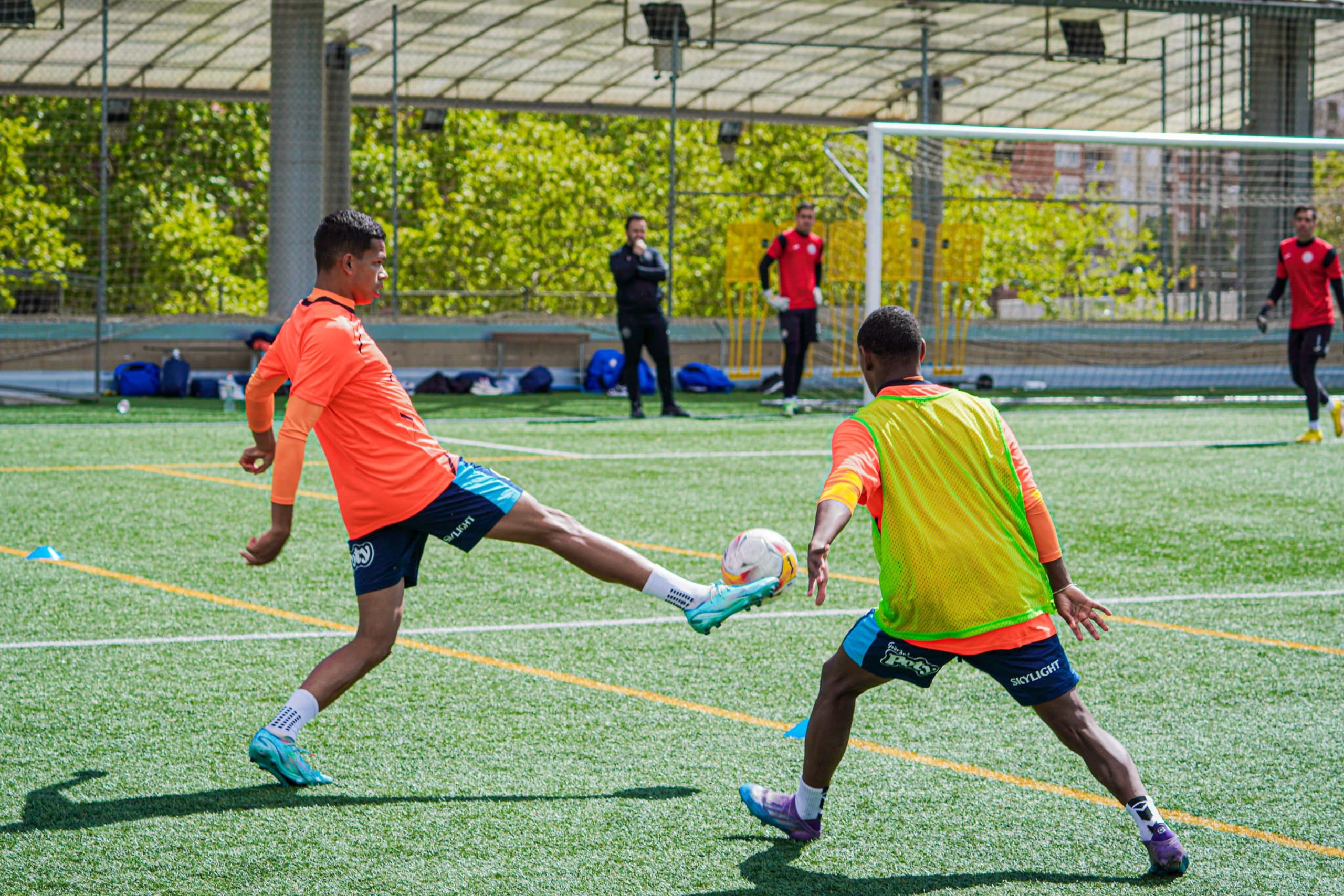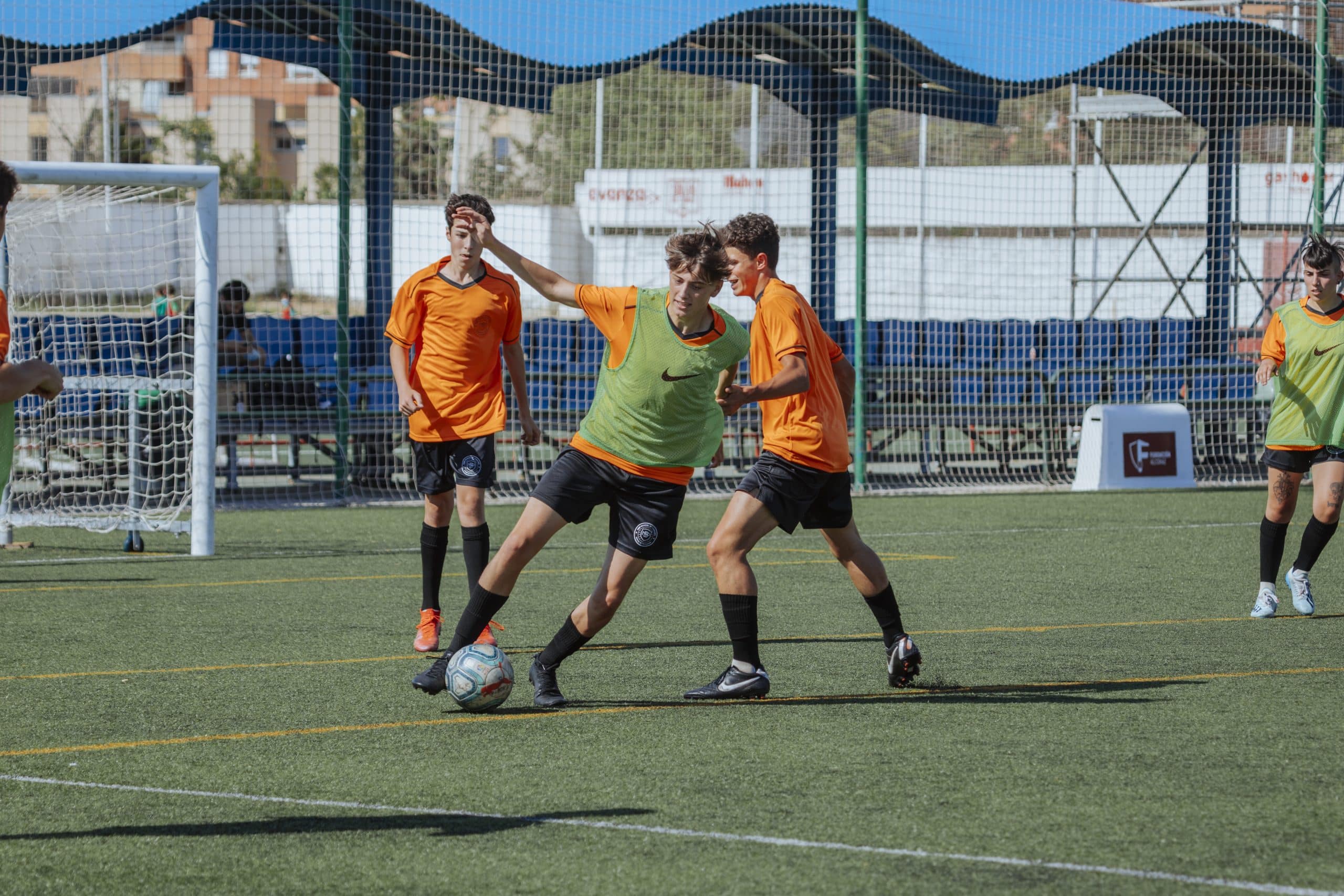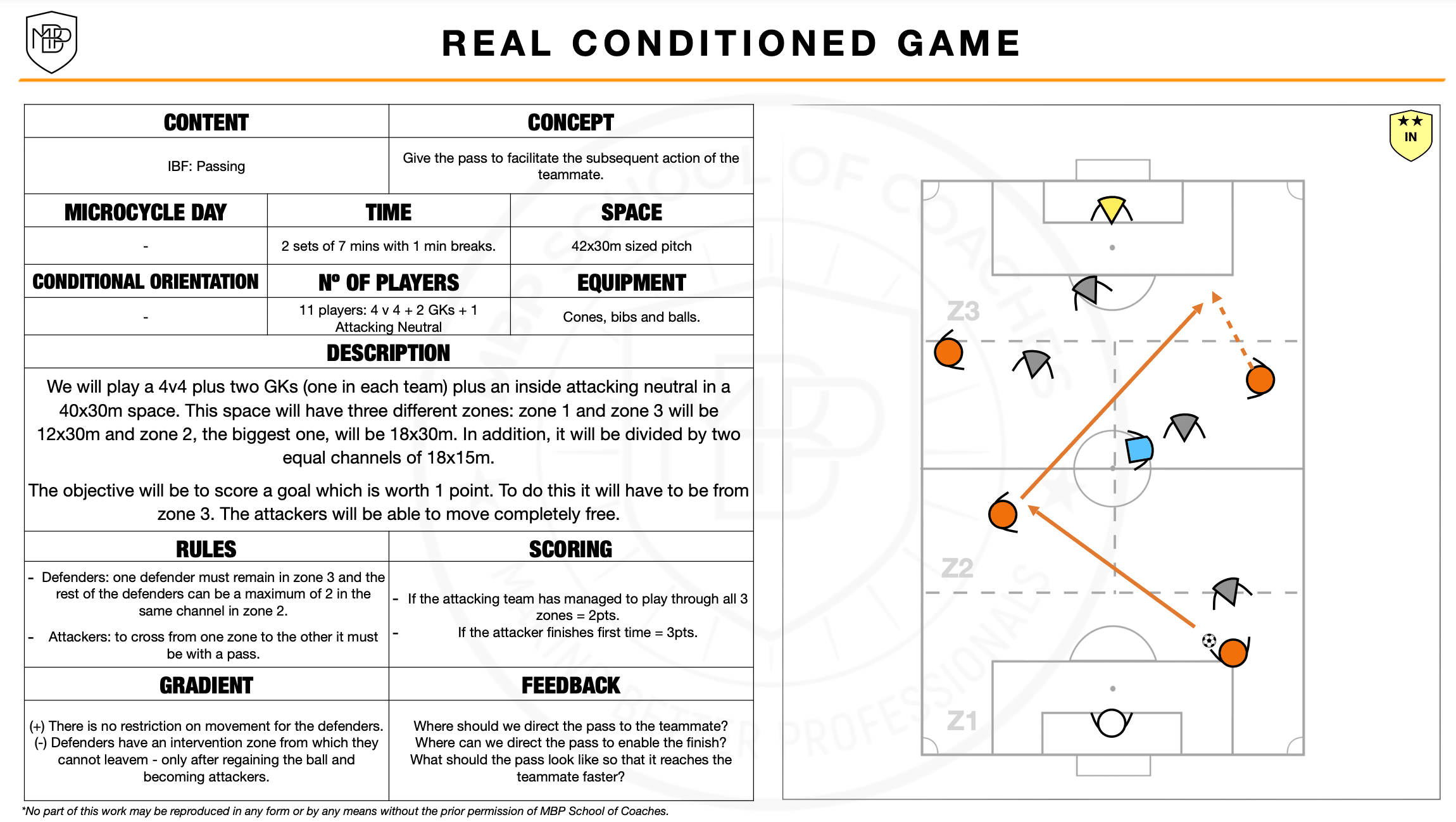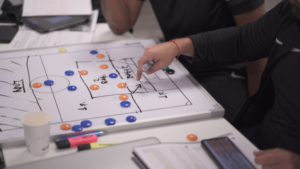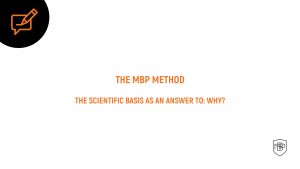In order for the training tasks to facilitate the work on the main content and objectives, we will have to set rules on some of the physical elements of the game, including spaces.
It is clear that, as coaches, we can teach our players many things, but never as many as the environment or playing context can, through the problem situations that we can constantly pose to young players.
This process of making rules is composed of three components that can help channel the attention of the players towards the content and concept that we want to train. These elements were previously discussed in the blog on ‘The 3 key points to effective training design’. However, this time we will focus exclusively on the types of spaces we can use.
-
Useful spaces refer to those playing spaces where free play can take place.
-
Restricted spaces are spaces where some role or behaviour is predetermined. For example, an area where only a defending role can enter.
-
Prohibited spaces, as the name suggests, are those spaces where a role cannot play. For example, no defending role can enter the area near the opposing goal.
-
Enhanced spaces are spaces that will promote the appearance and application of the main content and concept, or they can give extra points which, normally, will be related to the content to be trained. For example, a space where the attacking role will add a point every time he/she enters by passing to a teammate.
This means that the same space can have different orientations depending on the role. This means that a space can be useful for the attacking role, but, at the same time, restricted for the defenders, as only one of them can enter it during the play. In this way, we will be provoking behaviours in the players that should favour the appearance and use of the main content and concept.
To make it clearer, we will show a training task below that presents the different types of spaces.
-
Z1. Useful space for the attacking role and prohibited for the defending role, as they cannot enter it during this phase of the play.
Z2. Useful space for the attacking role and restricted space for the defenders, because no more than two players can be in the same channel.
Z3. Restricted space for the defending role because only one can be inside; and useful for the attacking role, who can move freely throughout the space.
With this, it is clear that the use we make of the playing spaces will directly influence the dynamics of the training tasks, ensuring that these situations favour the use and appearance of the main content and concept.
Do you want to improve the design of your training tasks?
In the Expert in Youth Football online course, you will learn to identify, understand, and transport to the sporting reality the psycho-pedagogical principles of football training in the formative stage. You will learn the MBP methodology in depth, mastering how to plan, according to the evolutionary stage of your players, the different content and concepts throughout the season, and design and implement the different didactic strategies that represent them.
You will be able to contextualize the technical, tactical, and collective game training. You will also be able to identify the bases of sensory training and its operation from evaluative techniques focused on the creation of metacognitive learning.
Click here for more information

